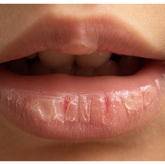
Going on a Cruise? Be Sure to Protect Your Family's Skin
As cruise lines across the United States resume their routes, people tired of not traveling throughout the pandemic pack their bags and head out on the high seas. You may be tempted to skip the sunscreen as you pack.
The Proper Way to Wear Sunscreen
Regardless of skin tone, dermatologists say the most SPF naturally present in the skin is equivalent to SPF 13, which means everyone should apply sunscreen every day.
Current medical advice recommends that everyone wear SPF 30 or higher UV protection every day, but it’s especially true for children, who have thinner skin than adults and are more likely to suffer sun damage. You should also look for broad-spectrum sunscreens, so they protect your child from both UVA and UVB rays.
Apply sunscreen to your child at least 15 minutes before they go outside, so it has time to absorb into their skin. You should reapply sunscreen to your child every two hours or more frequently if they are swimming or sweating.
Finding the Perfect Sunscreen
Conventional sunscreens often contain ingredients that aren’t friendly to all skin types, making some skin look ashy or leaving a white cast on your child’s skin.
If your child has dry skin, apply a moisturizer before applying sunscreen. Chemicals in sunscreens often rob the skin of moisture, which can increase the likelihood that your child’s skin will turn ashy while wearing sunscreen.
- Chemical Sunscreen
Chemical sunscreens are absorbed into the skin, where they react with UV rays to convert UV rays into heat, which then leaves the skin. Since these are absorbed into the skin, this type of sunscreen doesn’t leave a white cast like other formulas.
Many chemicals in chemical sunscreens are currently under review to determine their safety for humans and marine life when the sunscreen washes off while swimming.
- Mineral Sunscreens
Many people can’t tolerate chemical sunscreens because they irritate their sensitive skin. If your child has sensitive skin, it’s best to use a tinted mineral sunscreen, which blends better with most skin hues.
In mineral sunscreen, zinc oxide, titanium dioxide, or iron oxide sit on top of the skin, serving as a barrier that prevents UV rays from reaching your skin.
Mineral sunscreens, because they contain clean and natural ingredients, also tend to cause less irritation to those with sensitive skin, but they are thicker than chemical sunscreens, which means they may be more likely to clog pores, trapping sebum and causing acne.
Don’t Forget to Moisturize!
While on a cruise or other vacation, not only do you have to contend with the sun, but you also have to consider other environmental factors, like wind and humidity levels. Melanin-rich skin is prone to dryness, so your child’s skin may need protection from dry climates with moisturizers containing occlusive ingredients like beeswax and lanolin. These create a protective layer on the skin to trap moisture and repel environmental pollutants.
Melabebe’s Protect: All-in-One Moisture and Hydration Créme
Melabebe understands skincare for the family doesn’t need to be complicated. Our products contain only natural, toxic-free ingredients to provide the ultimate pure nourishment.






